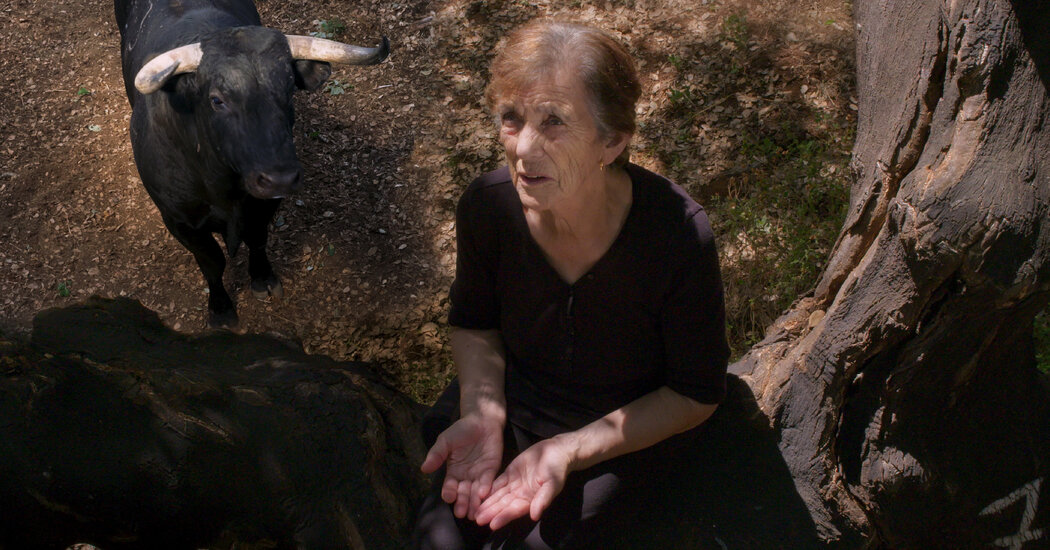Unfolding like an eerie folk tale, but grounded in the blood, sweat and tears of a real-life community, “Fire of Wind” tells the story of a group of grape pickers forced to seek refuge in the curling branches of oak trees after a bull is let loose and fatally gores a few of their companions.
A luminous opening scene, in which the workers tend to the harvest, their faces framed elegantly by vine leaves, turns ominous when a young girl, Soraia (Soraia Prudêncio) cuts her hand with pruning shears. The blood from her wound seems to summon the beast, though the director Marta Mateus skips over the violence and pictures the aftermath, when Soraia and a dozen or so of her comrades have settled into their perches.
Mateus (who shares cinematography credit with Vítor Carvalho) captures this waiting game as a mostly silent series of static tableaux, each frame encompassing a worker, or group of workers, as they stare out in steely introspection. The plot is minimal by design, directing our attention toward more painterly details: the arrangement of bodies within the landscape; the way the sun pokes through the green foliage and seeps into the fleshy ochres of the environment. The tension comes courtesy of the bull, who lurks restlessly in the background of several shots.
“Fire of Wind” was filmed in Alentejo, in Portugal, and features mostly nonprofessional actors who live and work in the rural region. An elder matriarch (Maria Catarina Sapata) recalls the dictatorship of António de Oliveira Salazar; others pass around vintage photos of their ancestors as night turns to day, and an offscreen radio commentator celebrates International Workers’ Day. The film’s intriguing symbolism diminishes over time, but remaining is an elegant portrait of solidarity; a vision of workers enmeshed in the land that sustains them.
Fire of Wind
Not rated. In Portuguese, with subtitles. Running time: 1 hour 14 minutes. In theaters.
The post ‘Fire of Wind’ Review: May Day appeared first on New York Times.




